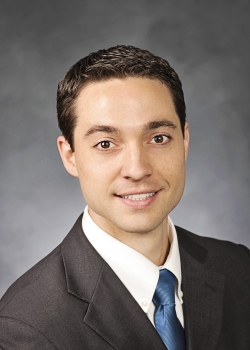Professor Receives Award for Outstanding Contribution to IS Education
PROVO, Utah – Mar 05, 2019 – From the comfort of his office, BYU Marriott School of Business information systems professor James Gaskin has taken on some of the most difficult concepts in statistics and taught them to a global audience. He was recently awarded the Outstanding Contribution to Information Systems Education by the Association for Information Systems, a twenty-five-year-old global organization, for his statistical service to the world community and impact in the field.
“I’m honored to receive this award,” says Gaskin. “I love what I do and that I get to pursue what I’m passionate about at my own pace.” According to the Association for Information Systems website, the award is given annually based on a nominee’s competence of the subject, curriculum development, as well as the ability to inspire independent and original thinking in students, advise students, create new teaching tools and methods, publish books and papers, and provide guidance of research projects.
The impact Gaskin has had within the field is expansive. “When the award was given, the announcer asked the audience of hundreds of scholars from around the world to raise their hands if they had ever benefited from my service,” says Gaskin. “Nearly every hand was raised. It felt good to know that I have not been wasting my time but have helped a lot of people.”
In order to help people, Gaskin set out to make the complexities of statistics understandable, a cause leading him to innovate away from typical in-class teaching methods, routine databases, and conventional mentoring techniques. While he was earning his PhD at Case Western Reserve University, he began exploring new ways of teaching using videos and has since created nearly two hundred YouTube videos designed to teach the intricacies of complex statistics topics. Those videos have garnered more than 4.8 million views and more than eighteen thousand subscribers.
In 2012, Gaskin realized his videos weren’t enough to convey certain complexities, which inspired him to develop an additional Wikipedia-like resource called StatWiki. This resource includes about fifty actively curated sections on statistics topics and has been visited more than eight million times.
Beyond his YouTube channel and curation of StatWiki, Gaskin has offered an annual on-campus statistics boot camp since he became a professor at BYU in 2012. He solo-hosts three days of the SEM Boot Camp with lectures, demonstrations, and interactive exercises that scholars from around the world attend. “I present three semesters of doctoral-level statistics in three days,” he says.
Gaskin’s contributions don’t stop there. In addition to answering emails from his students, Gaskin spends forty-five minutes every day doing what he calls “statistical service,” responding to dozens of emails from scholars around the world who ask him a myriad of statistical questions. He responds to every message within twenty-four hours of receiving it. “If I can save them stress, it only costs me a minute or two,” he says. “I’ve responded to over twenty-four thousand requests for statistical help.”
However, while many people look to him for mentorship, Gaskin doesn’t consider himself a statistical prodigy. “Two main reasons why I’m able to find errors and work through other people’s questions is because of the amount of time I’ve been doing this,” he says. “I’ve been in a position where I have seen everybody’s problems, and after years of answering those problems, there’s rarely an anomaly. And secondly, because of this, I can see a bigger picture than someone else might see who is working on a single set of data. Because I’ve seen so many problems, I can make connections between them.”
Seeing the patterns and making connections allows Gaskin to answers emails with difficult questions in only a few minutes. Simple math reveals that if Gaskin has spent about forty-five minutes a day responding to emails for the past five years, he has racked up more than an estimated one thousand six hundred hours of service.
That’s no small feat. Gaskin notes that even though it is encouraging to be recognized with awards, recognition is not his motive. “Even without the award, I’d keep helping,” he says. “It is good to do good. Being able to alleviate some suffering in the world is nice—even if it is just statistical suffering.”
Media Contact: Chad Little (801) 422-1512
Writer: Maren Cline




